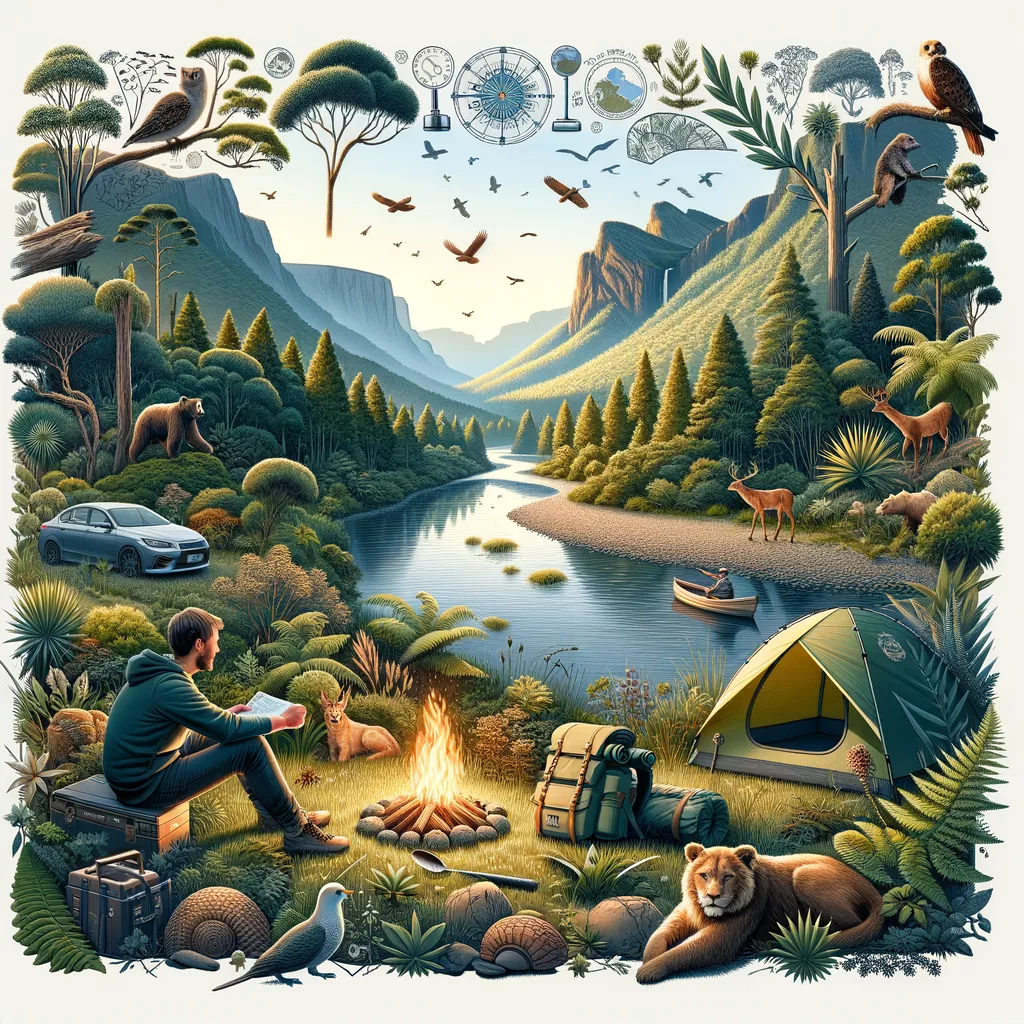Ultimate Guide for Parents: How to Safely Cross Rivers and Streams While Hiking
Welcome to our comprehensive guide for adventurous parents! If you’re planning to immerse your family in nature and explore the great outdoors by hiking, you’ve likely considered the myriad of experiences you’ll encounter. One such adventure is crossing rivers and streams, which, while exhilarating, can pose significant risks if not approached with caution and preparation. This guide will walk you through essential tips and strategies to ensure you and your little explorers can safely enjoy every step of your journey.
Understanding the Risks
Before we dive into the specifics of safely crossing rivers and streams, it’s crucial to understand the potential risks involved. Water bodies in nature are unpredictable. They can vary in depth, current strength, and bottom surface at different times of the year or even different times of the day. A seemingly calm stream in the morning can become a fast-moving hazard after an afternoon of heavy rain. Understanding these risks is the first step toward ensuring your family’s safety.
Preparing for Your Hike
Preparation is key when embarking on a hiking adventure that includes water crossings. Here’s what you need to consider:
- Educate Your Family: Discuss with your children the importance of respecting nature, including the water bodies you may encounter. Explain the potential dangers and why following safety guidelines is crucial.
- Check the Weather: Always check the weather forecast before your hike. If heavy rain is expected, it might be wise to postpone your trip or choose a route that doesn’t involve crossing water.
- Select Proper Gear: Wear appropriate footwear that provides good grip on slippery surfaces. Water shoes or sturdy sandals are better options than flip-flops or bulky boots.
- Pack Safety Equipment: Bring along a first-aid kit, a whistle, a lightweight rope, and if possible, a walking stick or trekking poles for additional stability during crossings.
Choosing the Right Spot to Cross
Finding the safest place to cross is vital. Here are some tips to help you make the right decision:
- Look for the Widest Section: Wider sections of a river or stream tend to have a slower current, making them safer for crossing. Avoid narrow passages where the water runs faster.
- Avoid Obstacles: Steer clear of places with large rocks, fallen trees, or dense vegetation. These can increase the risk of slipping or getting trapped.
- Observe the Water: If the water is murky and you can’t see the bottom, it’s best to find a clearer spot. Being able to see where you’re stepping is crucial for a safe crossing.
Ensuring the safety of your family while enjoying the breathtaking beauty of the wilderness is of utmost importance. Whether you’re a seasoned hiker or just starting out, knowing how to safely cross rivers and streams is essential. In the next section of our guide, we’ll dive deeper into the techniques of crossing, the importance of teamwork, and how to handle unexpected situations. Stay tuned for more expert advice to make your outdoor adventures as safe and enjoyable as possible.

5 Essential Tips for Parents: Safely Crossing Rivers and Streams While Hiking
Welcome, adventurous parents, to your go-to guide for crossing rivers and streams with your children while hiking. The allure of the great outdoors is undeniable, and as you guide your little ones through nature, safety should always come first. Crossing water bodies can be a thrilling part of your hike, but it is not without its risks. This guide provides invaluable information to ensure that your crossings are safe and memorable for the right reasons.
1. Instill Respect for Nature in Young Hikers
One of the most important lessons you can impart to your young explorers is a profound respect for nature. Educate them about the environment you’re venturing into, emphasizing the beauty and power of rivers and streams. Discuss the importance of maintaining a safe distance from the edge and the reasons behind each safety precaution you instill. This foundational knowledge is crucial for fostering a responsible attitude towards nature and ensuring they understand the gravity of safety measures.
2. Equip Your Family with the Right Footwear
Choosing the appropriate footwear is a game-changer for crossing rivers and streams. Footwear should have a sturdy grip, be comfortable for long distances, and handle getting wet. Closed-toe, water-resistant shoes designed for hiking provide protection and grip on slippery surfaces. Avoid sandals that can easily slip off or flip-flops, which offer little to no support. Preparing your family with the right shoes will dramatically reduce the risk of slips, falls, and injuries.
3. Learn to Read the Water
Before any crossing, take the time to observe the water. Teach your children how to identify safe crossing points. Look for areas where the water flows smoothly over a wider area, which typically indicates a safer and more manageable current. Avoid sections of the river that are deep, moving rapidly, or show signs of debris. Understanding the visual cues of water dynamics can greatly aid in selecting the safest possible crossing point.
4. Practice Safe Crossing Techniques
Safe crossing techniques can ensure that each family member crosses confidently and securely. Face upstream and lean slightly into the current as you walk sideways. This provides stability and allows you to brace against the flow of the water. Use trekking poles or a sturdy stick to provide an additional point of contact with the ground. If you’re crossing as a group, consider crossing together while holding hands to form a line, offering additional stability to the most vulnerable family members.
5. Pack the Essentials for Emergencies
Preparation extends beyond knowledge and technique; it also requires the right equipment. Your backpack should include a compact, waterproof first-aid kit, emergency whistles for each family member, and a length of rope. These items are crucial for attending to any injuries quickly, summoning help if separated, and potentially assisting in a physical crossing or rescue if necessary.
Embarking on a hiking journey with your family is an opportunity to create lasting memories and instill a love for the outdoors in your children. By following these five essential tips, you can navigate the challenges of crossing rivers and streams with confidence, ensuring a safe and exhilarating experience for everyone. Prepare thoroughly, respect nature’s power, and enjoy the unique adventures that each crossing presents. The wilderness is an exceptional classroom, offering endless lessons in resilience, teamwork, and the sheer joy of discovering the natural world together.
Remember, every river and stream is different, and conditions can change rapidly due to weather and seasonal variations. Always prioritize the safety of your group above the desire to reach a specific destination. If in doubt, the best decision may be to turn back and find an alternative route. Adventure awaits, but it’s the well-prepared and cautious explorers who enjoy it to its fullest, safely returning home with stories to tell and an eagerness for the next expedition.
Disclaimer
The articles available via our website provide general information only and we strongly urge readers to exercise caution and conduct their own thorough research and fact-checking. The information presented should not be taken as absolute truth, and, to the maximum extent permitted by law, we will not be held liable for any inaccuracies or errors in the content. It is essential for individuals to independently verify and validate the information before making any decisions or taking any actions based on the articles.




